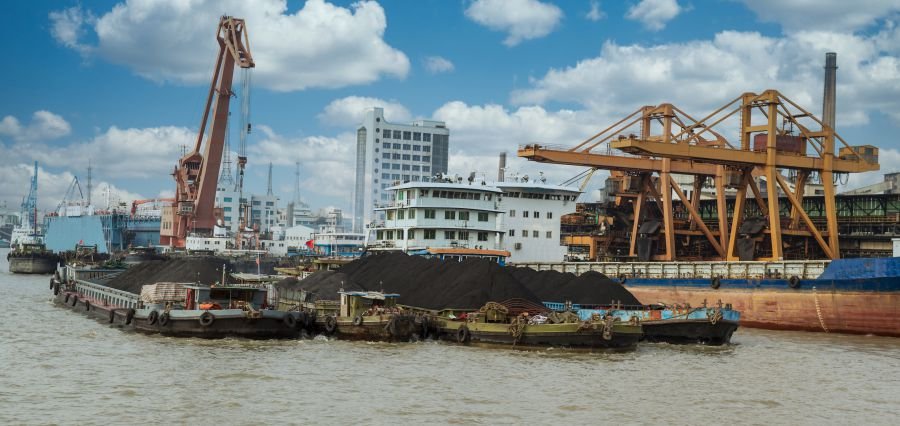An Overview of the Largest Industries in the World
If we take a moment to look through the lenses of the world’s largest markets, it would be obvious that the fate of the global economy lies mostly in the hand of a few mammoths’ sectors that shape virtually every area of our lives. These industries not only provide jobs for millions of people but are also the source of trillions of dollars of revenue every year. Getting acquainted with the dimensions of these industries is not just a move of carbocation chemistry but also a way to grasp the principles through which man’s demands, hitch technology, and globalization change the fate of the Earth.
Compared to just the sheer size of the market in terms of money, the biggest industries do not only have a gigantic social, cultural, and political influence. These industries have a powerful voice in the global energy debate, the determining what and how different nations allocate their resources, what investment patterns will arise next, and even the way governments create their policies. In this highly interconnected world, the leading industrial countries and developing nations are becoming more interdependent through global supply chains.
The Energy Sector: Fuelling Economies and Futures
The list of the largest industries in the world cannot always mention first in comparison to other energy sector on the top of the heavy hitter list scale of the energy worldwide. However, it should be the first to come to mind in any energy-cantered talk. This is the reason why most of the world Ide’s will continue to be laid upon the oil and gas industry despite the looming worldwide energy transition to renewables. The energy industry is still in the heart of the ways economies take off even if the world is trying to change to renewable alternatives.
Traditional fossil energies, however, are not the biggest players in this field any longer. The era of renewables is steadily nearing, and the market ever rising demand for green sources of energy is encouraging countries to commit large sums of money to its infrastructure. It is, therefore, clear that the energy industry will be the world’s largest ones, despite such a scenario future will be different from the past.
Technology: The New Giant on the Scene
The world of oil marked the twentieth century, while the era of technology is getting a grip on the twenty-first century. Technology is listed as one of the largest industries in the world, making it a pillar of the global village, and having a deep impact on human communication, commerce, and social activities. The combined worth of some of the largest firms in the world such as Apple, Microsoft, Amazon, and Google is in the range of trillions of dollars, which is greater than the GDPs of several countries.
The technology industry is one of the fastest-growing sectors in history and the methods of humans are being changed by technology. Technology is used by billions of people in everything from artificial intelligence and cloud computing to e-commerce and mobile devices. The pace at which digitalization spreads in the developing economies is what allowing the major industry to win in the future with no limits to their reach. Technology is making everything so efficient in the areas which the other sectors serve fundamental human needs, thus becoming a driving factor and even a disrupting one on the global stage at the same time.
Agriculture: Feeding Billions Across Borders
Although futuristic industries might seem cooler, agriculture is still one of the world’s largest industries, as food remains the most essential item of human consumption. Agriculture and related sectors such as farming, livestock, and fisheries, offer employment to many people particularly, in third world countries. The industry plays a vital role in feeding the world’s population daily, and even with the technological improvements, the need for food will not decline because of the growing global population.
Nowadays, agriculture is not only dependent on a huge general labour force; it also uses combination of machinery, biotechnology, and precision farming. Multimillion-dollar companies are involved in international agribusiness dealings which, in their turn, are responsible for delivery of products in different locations of different continents. Although there are issues such as climate change and resource shortage, the industry is still the most impactful one which makes it one of the world’s biggest industries.
Finance and Banking: The Engine of Global Trade
Whenever the discussion of the biggest industrial concerns of the world comes up, finance-based organizations must be right there with them. Not as a separate business, but as the heart of the entire and almost all other industries, financially-based companies carry out transactions that amount to trillions of dollars every day. In the absence of finance, firms will not have the capacity for capital expansion; infrastructure development will be hampered, and creating inventions will not be accessible to anyone.
The success of this trade venture though, is not measured in numbers alone; it is also an indicator of health and security of business exchanges. Events like the 2008 economic adversity have shown just to what extent the global system depends on a well-organized financial structure. Presently, the banking sector is going through a transformation led by the likes of digital banks, cryptos and fintech incubators which has made it one of the world largest and most dynamic industries.
Entertainment and Media: Stories That Sell Globally
From the list of the largest industrial sectors of the world, entertainment may not be the immediate or the most obvious choice, but its overall income and market penetration are quite impressive. The six ways covered by the mentioned media include movies, concerts, television, streaming devices, video games, and social media. Collectively, the sum of the revenues generated from these streams of human creatives and storytellers has made the industry the cultural bridge universal.
Entertainment enjoys the same kind of popularity it had in developed countries but with a twist because of the advent of streaming services and international platforms it can now also reach the developing markets where media consumption trends have been rising the last few years. The main difference between industries that meet people’s physical needs and those that produce only emotional and cultural value is that entertainment still manages to achieve comparable financial strength to traditional sectors.
Final Thoughts: The Largest Industries in the World
The largest industries in the world represent the changing priorities of humanity in an era of science, from healthcare and agriculture that provide the basic needs for survival to the fields of technology and finance that aim at the development of innovation. On the one hand, it is almost impossible to determine the single most significant industry, on the other hand, it is precisely the interaction between them, which determines how human societies develop and alter their way of life. Had energy once symbolized progress and technology now represents the future, then perhaps the largest industries of the future would come from sectors that we cannot even fathom yet.
They are the biggest contributors not only to the growth of the global economy but also to the transformation of the ways of living, politics, and identities. They are not merely industries; they are at the core of civilization.
Read Also: Maximizing Technology: Key Traits of Successful Emerging CFOs




